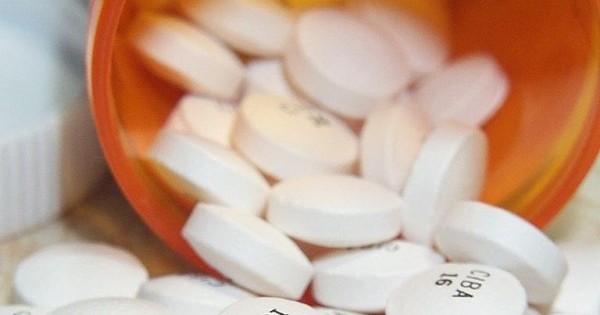
The Book of Woe: The DSM and the Unmaking of Psychiatry, By Gary Greenberg, Blue Rider Press, 403 pp., $28.95
Saving Normal: An Insider’s Revolt Against Out-of-Control Psychiatric Diagnosis, DSM-5, Big Pharma, and the Medicalization of Ordinary Life, By Allen Frances, William Morrow, 314 pp., $27.99
In May, the American Psychiatric Association (APA) published the fifth revision of its Diagnostic and Statistical Manual of Mental Disorders, better known as DSM-5, the bible of modern psychiatry. To mark the occasion, two new books attack the DSM system and the harm it has wrought over the years. One, The Book of Woe, is by an outsider, psychologist Gary Greenberg. The other, Saving Normal, is by a consummate insider, Allen Frances, the former chair of Duke University’s Department of Psychiatry who spearheaded the DSM-4 revision in the 1990s. Greenberg and Frances both argue persuasively that the DSM has contributed to an explosion of questionable diagnoses and has encouraged the massive overuse of dangerously addictive drugs. They likewise agree on why patients and doctors (including primary-care physicians) have embraced a manual that defines people’s psychological distress according to specific symptoms. As Frances puts it, “Society has a seemingly insatiable capacity (even hunger) to accept … newly minted mental disorders that help to define and explain away its emerging concerns.”
For his part, Greenberg would like to see the DSM thrown out and for psychiatrists to admit that they lack the scientific evidence to back up the manual’s 300-odd diagnoses. He recounts the story of a 19th-century physician who invented a condition called drapetomania to describe “the disease causing Negroes to run away.” Though Greenberg acknowledges that doctors were quick to consign this diagnosis to the “dustbin of medical history,” for him it stands as an example of how medicine has been too willing to create false disorders. Homosexuality is a more recent example, included as a mental disorder in the DSM’s first two renditions. It was removed only in 1974. Frances is less draconian, arguing that the manual retains at least some clinical value, though he wishes that doctors would treat it less as gospel than as a loosely written guidebook.
So how were the myriad disorders in the DSM arrived at? Despite pronouncements from the APA that the DSM-5 would be based on new and scientifically verifiable findings, the association updated the manual using the same old method: by assembling groups of psychiatric experts who couldn’t agree on definitions for even the most established diagnoses, like major depressive disorder and generalized anxiety disorder.
What have been the consequences of what Greenberg calls “a compendium of opinions masquerading as scientific truths?” Both he and Frances argue that medicine has ignored safer and longer-lasting methods of healing and addicted entire generations to pills that, in many cases, are no more effective than placebos but a lot more harmful. Worse, overreliance on the DSM and the rush to resort to drugs has led to “false epidemics” in autism, attention deficit hyperactivity disorder, social anxiety disorder, and pediatric bipolar disorder, among others, and contributed to a public health crisis of widespread prescription drug abuse. As Frances reports, there are now more overdoses in the United States from prescription drugs than from illicit ones. I see this problem firsthand as a college professor: with so many students diagnosed with ADHD (about 30 percent, according to Frances) and taking stimulants like Adderall, we have sold a generation on the fiction that prescription drugs are safe to abuse. The truth, of course, is otherwise—stimulant abuse can lead to depression, anxiety, and even suicide. Ditto for powerfully addictive antianxiety drugs like Ativan, Xanax, and Klonopin, which, when combined with prescription painkillers or alcohol, often cause overdoses. The toll extends beyond the number of lives lost because of overdoses to the “massive but hidden costs” of treating complications caused by these drugs, be it obesity, diabetes, or heart disease.
If you have time to read only one of these books, I would recommend Saving Normal. Frances possesses the more authoritative voice, especially in his call for reform, recommending that the DSM be taken out of the hands of the APA and suggesting a dozen ways to tame the power of the pharmaceutical industry. Among them would be bans on direct-to-consumer advertising on TV and on drug-company junkets, dinners, or continuing medical education paid for by Big Pharma. He further recommends criminal penalties for drug company executives convicted of malfeasance. He rightly notes that if this country had the political will, it would be easy to curtail prescription drug abuse because, unlike street drugs, they are dispensed by pharmacies and tracked by computers. Overprescribing doctors could also be identified and penalized—something that is already happening in some states, but much too infrequently, since pharmacists and state medical boards rarely check databases or report errant physicians.
But it’s Greenberg who explains more concisely why psychiatrists are unlikely to come clean about the DSM. “An honest psychiatry,” he says, “would have fewer patients, more modest claims about what it treats, less clout with insurers, and reduced authority to turn our troubles into medical problems simply by adding the word disorder to their description.”

